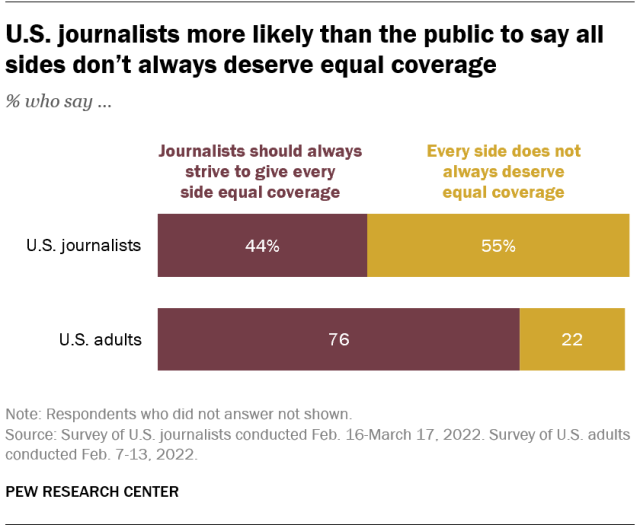☀️ Happy Thursday! The Briefing is your guide to the world of news and information. Sign up here!
In today’s email:
- Featured story: People affected by Hurricane Helene are turning to local news outlets
- In other news: Assange says he “pled guilty to journalism” to end incarceration
- Looking ahead: CNN and Reuters to introduce website paywalls
- Chart of the week: How journalists and the public differ in their views of “bothsidesism”
🔥 Featured story
In the wake of Hurricane Helene, people in affected areas are turning to local news outlets to provide critical, trustworthy updates on damage, relief efforts and more. With the widespread loss of phone service – and the spread of misinformation online – old-fashioned media like radio stations are helping people navigate the aftermath of the natural disaster.
Most U.S. adults (85%) say local news outlets are at least somewhat important to the well-being of their local community, including 44% who say they are extremely or very important, according to a 2024 Center survey. But locals’ access to certain kinds of news outlets may be limited by where they live. Americans who live in rural areas are much less likely than others to say there is a TV news station covering their local area. And one-in-five rural Americans say they don’t have a radio station covering their area, while an additional 18% say they are not sure if they have local radio coverage.
📌 In other news
- Julian Assange says he pleaded “guilty to journalism” to end incarceration
- Independent Russian newspaper stops publishing after being labeled as foreign agent
- Trump backs out of prime-time interview with 60 Minutes on CBS
- The Onion to revive cable news parody show Onion News Network
- Assaults on U.S. journalists increase, linked to Israel-Hamas war protests
- How social media users are documenting the war in Gaza
- A look into debates over social media’s role in teen suicide crisis
📅 Looking ahead
Earlier this week, CNN and Reuters announced that they plan to introduce paywalls to their websites. This move comes at a time when news websites are trying to find the right balance between revenue from advertising and subscriptions.
About a quarter of U.S. adults (23%) say they prefer to get news from news websites or apps over any other source, according to a recent Pew Research Center survey. Television is the only platform that is preferred by a larger share of Americans (32%).
📊 Chart of the week
This week’s chart looks at how journalists and the public differ in their views of “bothsidesism” in news coverage. In a 2022 survey, about three-quarters of U.S. adults (76%) said journalists should always strive to give all sides equal coverage. But in a survey of U.S. journalists, a little more than half (55%) said that every side does not always deserve equal coverage in the news.
👋 That’s all for this week.
The Briefing is compiled by Pew Research Center staff, including Naomi Forman-Katz, Jacob Liedke, Sarah Naseer, Christopher St. Aubin, Luxuan Wang and Emily Tomasik. It is edited by Michael Lipka and copy edited by Anna Jackson.
Do you like this newsletter? Email us at journalism@pewresearch.org or fill out this two-question survey to tell us what you think.
